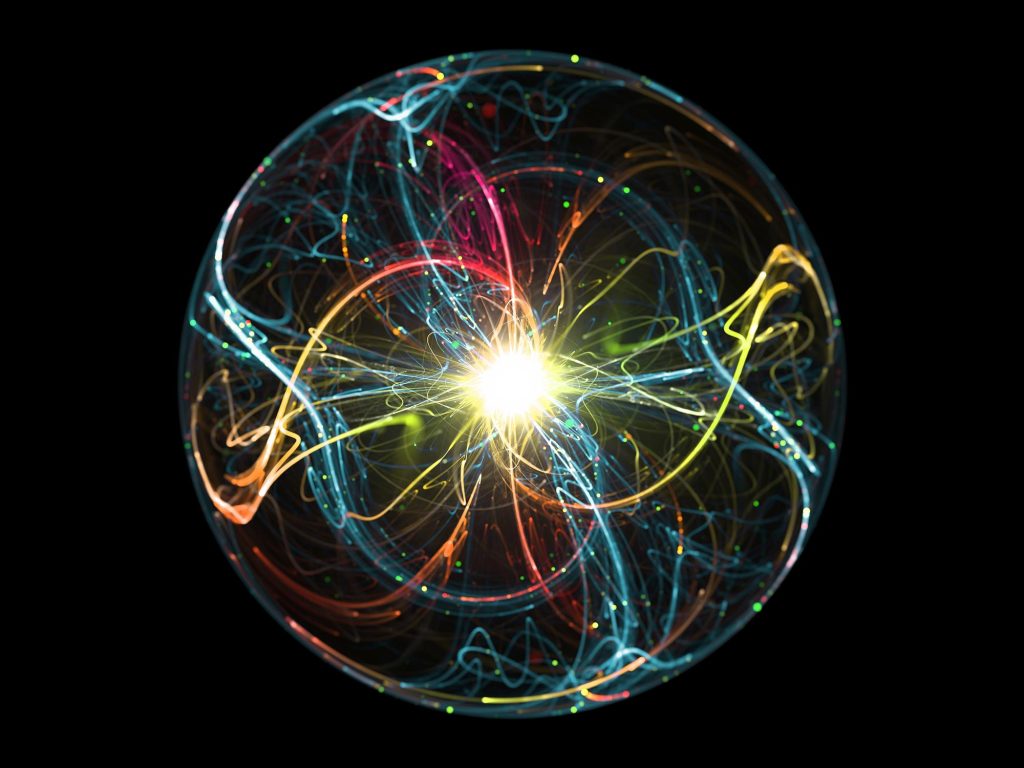
Die Forscher entdeckten, dass ein neuer theoretischer Rahmen zur Vereinigung von hierarchischer und nicht-hierarchischer Physik durch die Dualität von nicht-hierarchischen Räumen und gekrümmten Räumen generiert wird.
Das Rätsel der Physik wird durch eine neue Dualität gelöst.
Nach herkömmlichem Denken ist es notwendig, einen flachen Bereich durch Biegen oder Strecken zu verformen, um einen gekrümmten Raum zu schaffen. Eine Gruppe von Wissenschaftlern in Purdue Universität Er entwickelte eine neue Methode zur Erzeugung gekrümmter Räume, die auch die Antwort auf ein physikalisches Rätsel liefert. Das Team entwickelte eine Methode unter Verwendung von Nichthermitizität, die in allen mit Umgebungen gekoppelten Systemen auftritt, um eine hyperbolische Oberfläche und eine Reihe anderer typischer gekrümmter Räume zu konstruieren, ohne physische Verzerrungen der physischen Systeme zu verursachen.
„Unsere Arbeit könnte das allgemeine Verständnis von Krümmung und Entfernung revolutionieren“, sagt Qi Zhou, Professor für Physik und Astronomie.
„Es beantwortete auch langjährige Fragen in der nicht-hermiteschen Quantenmechanik, indem es nicht-hermitesche Physik und krummlinige Entfernungen überbrückte. Diese beiden Themen sollten völlig getrennt sein. Das ungewöhnliche Verhalten nicht-hermitescher Systeme, das Physiker seit Jahrzehnten verwirrt, ist nein länger ein Rätsel, wenn wir erkennen, dass der Raum gekrümmt war. Mit anderen Worten, nicht gerade und gekrümmte Räume sind doppelt miteinander verbunden, sie sind zwei Seiten derselben Medaille.

Im Hintergrund ist Poincarés Halbebene zu sehen, die eine gekrümmte Oberfläche zeigt. Die weiße Geodäsie einer gekrümmten Oberfläche erscheint als Analogon gerader Linien auf einer ebenen Fläche. Weiße Kugeln, die sich in die richtige Richtung bewegen, zeigen den geometrischen Ursprung des ungewöhnlichen Skin-Effekts in der nicht-hierarchischen Physik. Bildnachweis: Chenwei Lv und Ren Zhang.
Die Ergebnisse des Teams wurden in der Zeitschrift veröffentlicht
One must first comprehend the distinction between Hermitian and non-Hermitian systems in physics in order to comprehend how this discovery works. Zhou explains it using the example of a quantum particle that can “hop” between several locations on a lattice.
If the probability for a quantum particle to hop in the right direction is the same as the probability to hop in the left direction, then the Hamiltonian is Hermitian. If these two probabilities are different, the Hamiltonian is non-Hermitian. This is the reason that Chenwei and Ren Zhang have used arrows with different sizes and thicknesses to denote the hopping probabilities in opposite directions in their plot.
“Typical textbooks of quantum mechanics mainly focus on systems governed by Hamiltonians that are Hermitian,” says Lv.
“A quantum particle moving in a lattice needs to have an equal probability to tunnel along the left and right directions. Whereas Hermitian Hamiltonians are well-established frameworks for studying isolated systems, the couplings with the environment inevitably lead to dissipations in open systems, which may give rise to Hamiltonians that are no longer Hermitian. For instance, the tunneling amplitudes in a lattice are no longer equal in opposite directions, a phenomenon called nonreciprocal tunneling. In such non-Hermitian systems, familiar textbook results no longer apply and some may even look completely opposite to that of Hermitian systems. For instance, eigenstates of non-Hermitian systems are no longer orthogonal, in sharp contrast to what we learned in the first class of an undergraduate quantum mechanics course. These extraordinary behaviors of non-Hermitian systems have been intriguing physicists for decades, but many outstanding questions remain open.”
He further explains that their work provides an unprecedented explanation of fundamental non-Hermitian quantum phenomena. They found that a non-Hermitian Hamiltonian has curved the space where a quantum particle resides. For instance, a quantum particle in a lattice with nonreciprocal tunneling is in fact moving on a curved surface. The ratio of the tunneling amplitudes along one direction to that in the opposite direction controls how large the surface is curved.
In such curved spaces, all the strange non-Hermitian phenomena, some of which may even appear unphysical, immediately become natural. It is the finite curvature that requires orthonormal conditions distinct from their counterparts in flat spaces. As such, eigenstates would not appear orthogonal if we used the theoretical formula derived for flat spaces. It is also the finite curvature that gives rise to the extraordinary non-Hermitian skin effect that all eigenstates concentrate near one edge of the system.
“This research is of fundamental importance and its implications are two-fold,” says Zhang. “On the one hand, it establishes non-Hermiticity as a unique tool to simulate intriguing quantum systems in curved spaces,” he explains. “Most quantum systems available in laboratories are flat and it often requires significant efforts to access quantum systems in curved spaces. Our results show that non-Hermiticity offers experimentalists an extra knob to access and manipulate curved spaces.
An example is that a hyperbolic surface could be created and further be threaded by a magnetic field. This could allow experimentalists to explore the responses of quantum Hall states to finite curvatures, an outstanding question in condensed matter physics. On the other hand, the duality allows experimentalists to use curved spaces to explore non-Hermitian physics. For instance, our results provide experimentalists a new approach to access exceptional points using curved spaces and improve the precision of quantum sensors without resorting to dissipations.”
Now that the team has published their findings, they anticipate it spinning off into multiple directions for further study. Physicists studying curved spaces could implement their apparatuses to address challenging questions in non-Hermitian physics.
Also, physicists working on non-Hermitian systems could tailor dissipations to access non-trivial curved spaces that cannot be easily obtained by conventional means. The Zhou research group will continue to theoretically explore more connections between non-Hermitian physics and curved spaces. They also hope to help bridge the gap between these two physics subjects and bring these two different communities together with future research.
According to the team, Purdue University is uniquely qualified to foster this type of quantum research. Purdue has been growing strong in quantum information science at a fast pace over the past few years. The Purdue Quantum Science and Engineering Institute paired with the Department of Physics and Astronomy, allows the team to collaborate with many colleagues with diverse expertise and foster interdepartmental and collegiate growth on a variety of platforms that exhibit dissipations and nonreciprocal tunneling.
Reference: “Curving the space by non-Hermiticity” by Chenwei Lv, Ren Zhang, Zhengzheng Zhai, and Qi Zhou, 21 April 2022, Nature Communications.
DOI: 10.1038/s41467-022-29774-8

„Pop-Kulturaholic. Web-Nerd. Engagierter Social-Media-Praktiker. Reisefanatiker. Schöpfer. Food-Guru.“

/cdn.vox-cdn.com/uploads/chorus_asset/file/24924650/236780_Google_AntiTrust_Trial_Custom_Art_CVirginia__0000_4.png)




More Stories
Die Federal Aviation Administration fordert eine Untersuchung des Misserfolgs bei der Landung der Falcon-9-Rakete von SpaceX
Identische Dinosaurier-Fußabdrücke auf zwei Kontinenten entdeckt
SpaceX startet 21 Starlink-Satelliten mit einer Falcon 9-Rakete von Cape Canaveral aus – SpaceflightNow